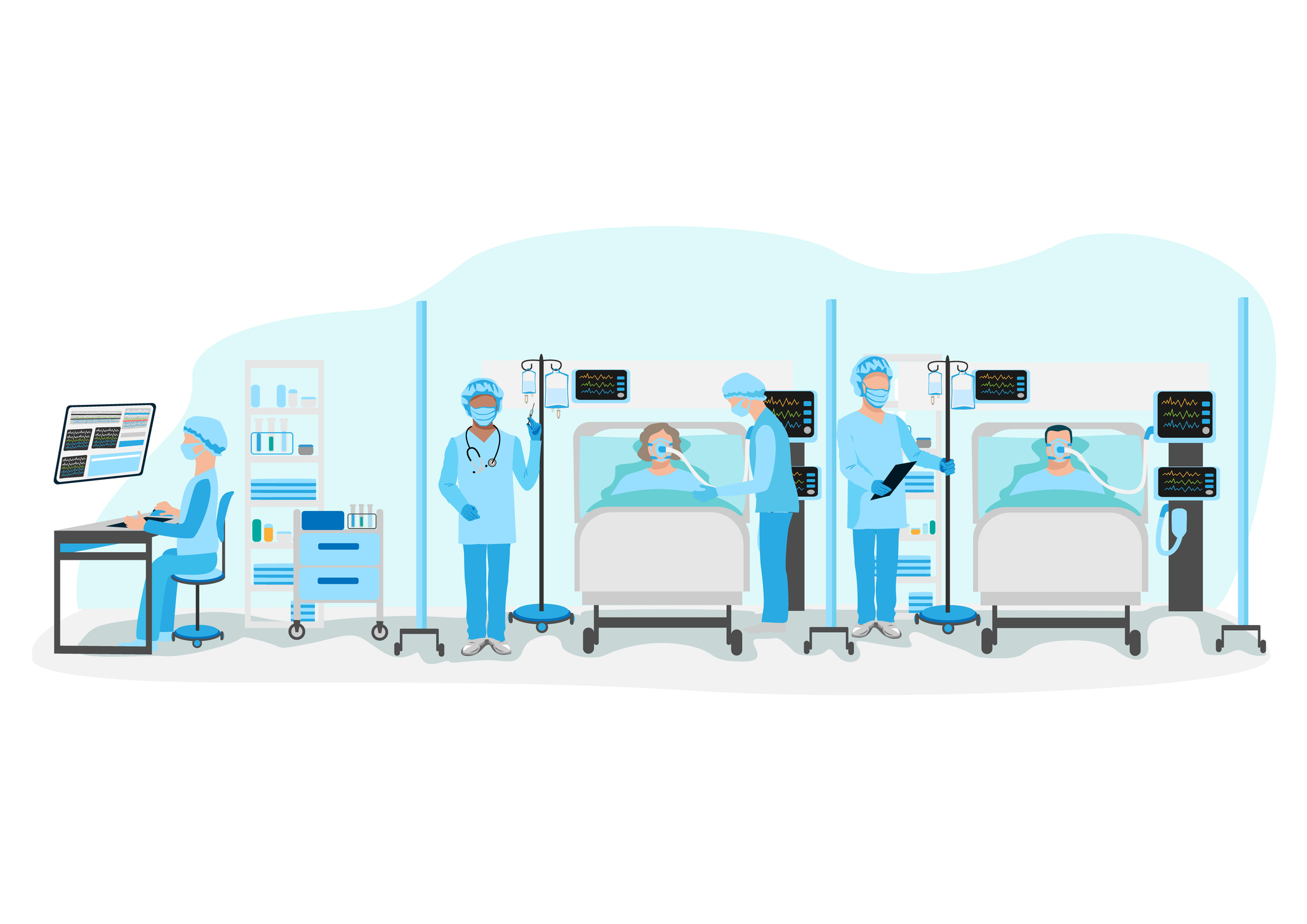
In this blog post, we are sharing the key messages on the burden of unsafe care taken from the Global Patient Safety Report 2024 published by WHO. Our focus is on the report’s key findings and analysis of patient harm by medical setting/clinical domain and by source of harm. To make it easy for the readers, we have summarized them in a table format. The full report, along with references to evidence-based studies and surveys, is accessible via the link below.
Key messages
- Unsafe care is a significant global public health issue, with more than one in ten patients experiencing harm in medical care settings – half of which could be preventable – leading to millions of deaths and substantial economic costs annually.
- The burden of unsafe care disproportionately affects low- and middle-income countries (LMIC), where the majority of patient harm and associated deaths occur. Vulnerable populations, including older adults, children, and ethnic minorities, face higher risks of patient harm, highlighting the importance of tailored interventions for the safety of these groups within healthcare systems.
- Globally, 1 in 20 patients suffer from preventable medication harm, highlighting a significant challenge across health care systems. Specifically, over half (53%) of this harm arises at the prescribing stage, pointing to a crucial need for improving medication safety practices.
- Highly specialized care settings, such as intensive care, emergency, and surgical units, are associated with the highest rates of patient harm, including both overall harm and preventable harm. In primary care, an estimated 7% of patients experience harm.
Burden of harm to the patients
Unsafe care is a major public health problem that affects millions of patients worldwide. According to a recent systematic review, 12% of patients experience harm across different medical care settings, which means that more than one in every ten patients is harmed from adverse events due to unsafe care.
The severity of around half of patient harm extends beyond mild injuries and temporary harm. As much as 12% of adverse events cause permanent disability or patient death. Around half of all harm due to unsafe care was considered preventable. Recent estimates indicate that unsafe care causes more than 3 million deaths every year. Patient harm also exerts a great economic cost on health systems and society, consuming valuable resources that could be put to productive uses elsewhere.
Moreover, patient harm due to unsafe care causes reputational damage to health care systems, detrimentally affecting trust in health care services, the morale and well-being of health and care workers and public opinion about the value of investing precious societal resources in health care systems.
Let us take a closer look at patient harm by medical setting/clinical domain and by source of harm.
Burden of harm by medical setting and clinical domain
A large meta-analysis study showed that highly specialized care settings had higher estimates of all harm and preventable patient harm. This includes intensive care units (ICU) (all harm ~34%; preventable harm ~18%), emergency departments (all ~5%; preventable ~3%) and surgical units (all ~20%; preventable ~10%).
Table 1 is a summary of the key points on patient harm by medical setting and clinical domain.
| Medical Setting / Clinical Domain | Key Findings from Studies and Surveys |
|---|---|
| Intensive care setting | Up to one in five ICU patients experience patient harm, corresponding to up to 80.5 events per 1,000 patient-days, of which 13% are lethal or life threatening. Patient harm increases the length of ICU stays by an average of 6.8 days, and the length of hospital stays by 8.9 days. Medical errors and deaths due to preventable harm are more common in ICUs due to the severity of illness, complexity of care, and number of therapies provided to patients treated in this environment. Reducing the burden of harm in intensive care settings remains a persistent challenge. |
| Surgery | Surgical procedures pose a high risk for patient harm, with complications affecting up to 25% of patients, and accounts for nearly half of all adverse events in hospitalized patients. At the same time, it is estimated that at least half of surgical harm is preventable. The most frequent causes of surgical adverse events include non-operative management errors. These include monitoring errors, incorrect or delayed treatment, and diagnostic errors or delays. |
| Emergency Units | Emergency units are high-risk settings for patient harm, with incidences ranging from 0.2% to 6%, primarily due to issues relating to management, diagnosis, and medication. |
| General hospitals | The prevalence of all patient harm is approximately 10% of all patient interactions and preventable harm is around 5%. According to one study, the incidence of harms was 6.6 per 1,000 days of hospitalization. Invasive procedures were the source of around half of all harms. |
| Primary care | Globally, the evidence of harm in primary care settings is incomplete and there is a need for a wider range of methods to measure harm in these settings given the large and heterogenous pool of people treated in primary care. Problems in communication and administration appear to be at the root of many incidents of patient harm in primary care. |
| Long-term care | In long-term care, patients remain in the setting for long periods and have an increased risk of harm. Research shows that over half of the harm that occurs is preventable, and over 40% of admissions to hospitals from long-term care are avoidable. The root causes of these events can be addressed through improved prevention and safety practices, and workforce development, including skill mix and education. |
| Mental health settings | In mental health settings, estimates of the scale and nature of patient harm are lacking. In one evaluation of 4,536 patients in primary health care and emergency departments, patients with psychiatric diagnoses face nearly double the risk of preventable harm compared to others. |
| Palliative care | Patients receiving palliative care are vulnerable to inadvertent harm during their medical and nursing care, with some risks specific to this patient population. An investigation involving 475 reports of serious incidents in patients receiving palliative care in the United Kingdom found that 266 reports were related to pressure ulcers, 91 to medication errors, 46 to falls and 21 to HCAIs. Better coordination of the delivery of palliative care and wider availability of specialist palliative care advice and support may make care safer. |
| Radiotherapy | It is estimated that the overall incidence of radiotherapy errors is around 1,500 per million treatment courses. Errors often occur in the planning and treatment phases, with concerns about dose calculation and regulation. |
| Telemedicine & digital health | Patient safety concerns including diagnostic errors, medication safety gaps, and increased in-person follow-ups, with inconsistent data on its potential harms. |
| Trauma | Trauma patients, particularly in orthopedics, face higher risks, with harm rates significantly exceeding those of non-trauma patients (11.4% compared to 4.1% in one study). The primary causes of patient harm were predominantly linked to technical equipment and logistics, which could have been prevented. |
Burden of harm by source
Seven types of harm acquired in hospitals have been estimated to account for an annual loss of 23 million DALYs (disability-adjusted life years) at the global level. These include adverse drug events (ADEs), catheter-related urinary tract infections, catheter-related bloodstream infections, hospital-acquired pneumonia, venous thromboembolisms (VTEs), falls and pressure ulcers. The prevalence and impact of these harms vary significantly between high income countries (HICs) and low to middle income countries (LMICs).
A recent study from the US estimated that the most common sources of patient harm in hospitals were ADEs (39%); events related to surgeries or other clinical procedures (30%); patient care events such as falls or pressure ulcers (15%); and HCAIs (12%)
Table 2 is a summary of the key points on patient harm by source.
| Sources of Harm | Key Studies and Survey Findings |
|---|---|
| Medication errors | Medication errors are the leading source of patient harm, with 5% of patients globally affected. Globally about half (53%) of all preventable medication-related harm occurs at the ordering/prescribing stage and around a third (36%) at the monitoring/reporting stage. In LMICs, almost 80% of preventable medication-related harm occurs during the ordering/prescribing stage. |
| Diagnostic errors | Diagnostic errors are increasingly recognized as a key source of patient harm, with estimates indicating that 5% of adults are affected by diagnostic errors in outpatient environments in the United States. Similar meta-analysis found that globally,16% of preventable patient harm across the health system may be due to diagnostic errors, often due to issues in patient-practitioner encounters such as history taking, examination, and test interpretation. |
| Health care-associated infections | HCAIs affect 7% of hospital patients in high-income countries and 15% in LMICs, causing significant disability and premature mortality globally. The most frequently reported types of HCAIs are those of the respiratory tract, surgical sites, urinary tract, bloodstream and gastrointestinal tract. Several preventive measures exist to prevent transmission of HCAIs, with hand hygiene and other standard precautions and transmission-based precautions being among the most important ones. |
| Patient falls | Patient falls are one of the most common adverse events in hospital settings. According to some studies, patient falls occur at a rate of 3 to 5 per 1,000 bed days, and more than one-third of them cause injury. This negatively affects the safety and quality of care and the cost-effectiveness of health systems. |
| Pressure ulcers | Pressure ulcers are a common and preventable problem in healthcare settings, affecting more than 10% of adult hospital patients. Pressure ulcers have a negative impact on the physical and mental well-being of patients, as well as their quality of life. |
| Patient identification error | Patient identification errors can have serious consequences for healthcare delivery and lead to severe adverse events, such as operating on the wrong patient or the incorrect site. A 2018 report indicated that, from 2014 to 2017, 409 out of 3,326 sentinel events (12.3%) were associated with patient identification errors in the United States. |
| Unsafe transfusion practices | Unsafe blood transfusion and injection practices pose significant health risks, with an average of 12.2 serious transfusion reactions per 100,000 blood components as well as millions of infections, including hepatitis B, hepatitis C, and HIV, linked to unsafe injections each year. |
| VTEs (blood clots) | VTE is a common and preventable cause of patient harm, with an annual incidence of up to 12 people per 10 000. It is the leading source of lost DALYs. The global VTE burden is primarily associated with recent hospitalization for surgery or acute illness (up to 60%) and cancer (around 20%). |
Recommendations and conclusions
Patient harm has tragic effects on both patients and health workers including physical and/or psychological harm, a loss of trust in the healthcare system, and reduced staff morale.
The impact of patient harm on health workers is one of the major hidden burdens of patient harm. Health workers are often described as the ‘second victims’ of adverse events, experiencing detrimental impacts on their physical and mental health, and increased risks for more unsafe care incidents.
A systems-based approach can maximize the potential to avoid future adverse events, but it requires shifting from a ‘blame culture’ to a ‘just culture’, which achieves a balance between no blame and accountability, as well as successfully implemented safety improvement strategies.
A minimum set of appropriate and feasible standards for measuring patient harm should be established and adhered to globally. Specific reporting guidelines for patient harm are also necessary to strengthen the current evidence base and to help shed light on variations reported across studies and countries.
Finally, there is a need to move from non-systematic methods such as voluntary reporting to coordinated systematic measurement. This could involve a combination of methods including incident reporting at the national and facility level, national audits, screening programs, and clinical quality reviews to reliably map the landscape of patient safety.
Source: Adopted from Global Patient Safety Report 2024, WHO.
QUASR is an easy-to-use, secure, and affordable cloud-based incident reporting system designed for all healthcare settings
Start your 14-day free trial or get a demo of our premium software.






